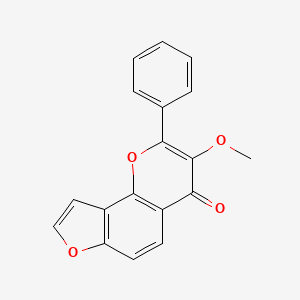
|
Karanjin |
Karanjin is a lipid of Polyketides (PK) class. |
35 |
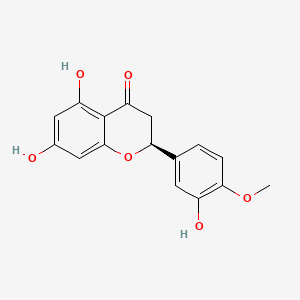
|
hesperetin |
Hesperetin is a lipid of Polyketides (PK) class. Hesperetin is associated with abnormalities such as Corn of toe, Ischemia, Osteoporosis, Consumption-archaic term for TB and Wiskott-Aldrich Syndrome. The involved functions are known as conjugation, inhibitors, Process, mRNA Expression and Adjudication. Hesperetin often locates in Entire intestinal epithelium, Protoplasm, Membrane, Shoulder and Back. The associated genes with Hesperetin are ABCG2 gene, ABCC2 gene, FATE1 gene, ABCB1 gene and P-glycoprotein 2. |
801 |
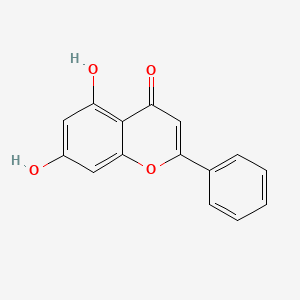
|
chrysin |
chrysin is a lipid of Polyketides (PK) class. Chrysin is associated with abnormalities such as Unconjugated hyperbilirubinemia, Metabolic Diseases, Hypogonadism, Renal tubular disorder and Colitis. The involved functions are known as Hypoxia, enzyme activity, Oxidation, inhibitors and Cell Survival. Chrysin often locates in Protoplasm, Plasma membrane, Back, Extracellular and Mitochondria. The associated genes with chrysin are CFB gene, P4HTM gene, UGT1A9 gene, CYP1A1 gene and UGT1A1 gene. The related lipids are Promega, estradiol-3-glucuronide, Steroids and Lipopolysaccharides. The related experimental models are Mouse Model. |
1085 |
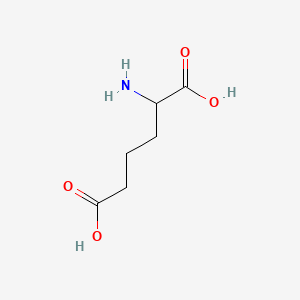
|
Aminoadipic acid |
Aminoadipic acid is a lipid of Fatty Acyls (FA) class. Aminoadipic acid is associated with abnormalities such as Diabetes and Proliferative retinopathy NOS. The involved functions are known as Uptake, Process, lysine catabolism, Pressure- physical agent and Proteolysis. Aminoadipic acid often locates in Protoplasm, Chromosomes, Astrocytic, Basal lamina and Cytoplasmic matrix. The associated genes with Aminoadipic acid are Homologous Gene, Excitatory Amino Acids, allysine, Diaminopimelic Acid and Gene Clusters. |
1114 |
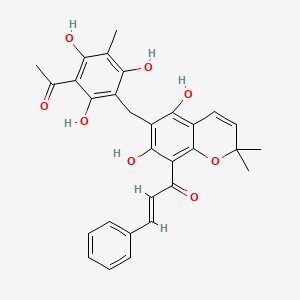
|
rottlerin |
Rottlerin is a lipid of Polyketides (PK) class. Rottlerin is associated with abnormalities such as PARAGANGLIOMAS 2, Hyperostosis, Diffuse Idiopathic Skeletal, Virus Diseases, Perisylvian syndrome and Autoimmune disease (systemic) NOS. The involved functions are known as Apoptosis, Regulation, Signal Transduction, inhibitors and Proteasome Inhibitors [MoA]. Rottlerin often locates in Clone, Membrane, Body tissue, Plasma membrane and soluble. The associated genes with Rottlerin are XIAP gene, GAPDH gene, ICAM1 gene, P4HTM gene and TNFSF10 gene. The related lipids are Promega, Fatty Acids, Sphingolipids, Lipopolysaccharides and Saponin. The related experimental models are Mouse Model, Xenograft Model and Cancer Model. |
1198 |
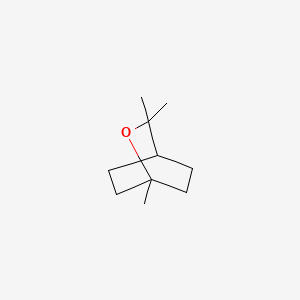
|
1,8-Cineol |
1,8-cineol is a lipid of Prenol Lipids (PR) class. The involved functions are known as Amplification, enzyme activity and inhibitors. 1,8-cineol often locates in subsynaptic reticulum. The related lipids are palmitoleic acid, pentadecanoic acid, stearic acid and erucic acid. |
1326 |

|
hesperidin |
(2S)-5-hydroxy-2-(3-hydroxy-4-methoxyphenyl)-4-oxo-3,4-dihydro-2H-chromen-7-yl 6-O-(6-deoxyhexopyranosyl)hexopyranoside is a lipid of Polyketides (PK) class. (2s)-5-hydroxy-2-(3-hydroxy-4-methoxyphenyl)-4-oxo-3,4-dihydro-2h-chromen-7-yl 6-o-(6-deoxyhexopyranosyl)hexopyranoside is associated with abnormalities such as Osteoporosis, Postmenopausal, estrogen deficiency, Chronic venous insufficiency, Neurodegenerative Disorders and Cerebrovascular accident. The involved functions are known as Sweetening Agents, Vmax, enzyme activity, Fermentation and Regulation. (2s)-5-hydroxy-2-(3-hydroxy-4-methoxyphenyl)-4-oxo-3,4-dihydro-2h-chromen-7-yl 6-o-(6-deoxyhexopyranosyl)hexopyranoside often locates in Entire gastrointestinal tract, soluble, Entire bony skeleton, Trabecular substance of bone and Blood. The associated genes with (2S)-5-hydroxy-2-(3-hydroxy-4-methoxyphenyl)-4-oxo-3,4-dihydro-2H-chromen-7-yl 6-O-(6-deoxyhexopyranosyl)hexopyranoside are MTPN gene, GLUCOSIDASE, STN gene, SLC33A1 gene and GHRL gene. The related lipids are Total cholesterol and blood lipid. The related experimental models are Arthritis, Collagen-Induced. |
1455 |
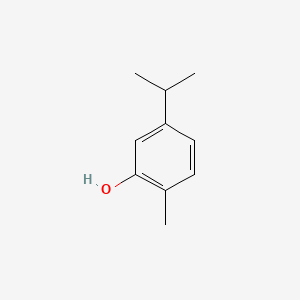
|
Carvacrol |
Carvacrol is a lipid of Prenol Lipids (PR) class. Carvacrol is associated with abnormalities such as Consumption-archaic term for TB, Disintegration (morphologic abnormality), Infection, Corn of toe and Candidiasis of vagina. The involved functions are known as Stereochemistry, Anabolism, Oxidation, Process and Binding (Molecular Function). Carvacrol often locates in Skin, Nerve Tissue, Membrane, Endothelium and Plasma membrane. The associated genes with Carvacrol are P4HTM gene, TRPV3 gene, TRPV1 gene, TRPV2 gene and TRPV4 gene. The related lipids are Fatty Acids, Lipopolysaccharides, Octanols, Micelles and butyrate. |
1535 |

|
emodin |
emodin is a lipid of Polyketides (PK) class. Emodin is associated with abnormalities such as Infection, Conjunctivitis, Vernal, Stevens-Johnson Syndrome, Conjunctival scar and Allergic Conjunctivitis. The involved functions are known as signaling cascade, Metabolic Inhibition, Cell Death, Phosphorylation and JNK Pathway. Emodin often locates in Membrane, Protoplasm, Mitochondria, Cytoplasmic matrix and soluble. The associated genes with emodin are cytochrome c'', UTS2 gene, TK Gene, Gene Clusters and CFC1 gene. The related lipids are Phosphatidylserines, Promega, Sphingolipids, Membrane Lipids and Palmitates. The related experimental models are Mouse Model and Transgenic Model. |
1742 |

|
(e,e,e,e)-squalene |
(e,e,e,e)-squalene is a lipid of Fatty Acyls (FA) class. (e,e,e,e)-squalene is associated with abnormalities such as Hypercholesterolemia and Cataract. The involved functions are known as Process, metaplastic cell transformation, Protein Overexpression, Anabolism and Biosynthetic Pathways. (e,e,e,e)-squalene often locates in Membrane, Protoplasm, Plasma membrane, Tissue membrane and Back. The associated genes with (e,e,e,e)-squalene are Genome, IMPACT gene, GAPDH gene, GTF2I gene and Chromatin. The related lipids are Membrane Lipids, cycloartenol, Sterols, Fatty Acids and Nonesterified Fatty Acids. |
1766 |









